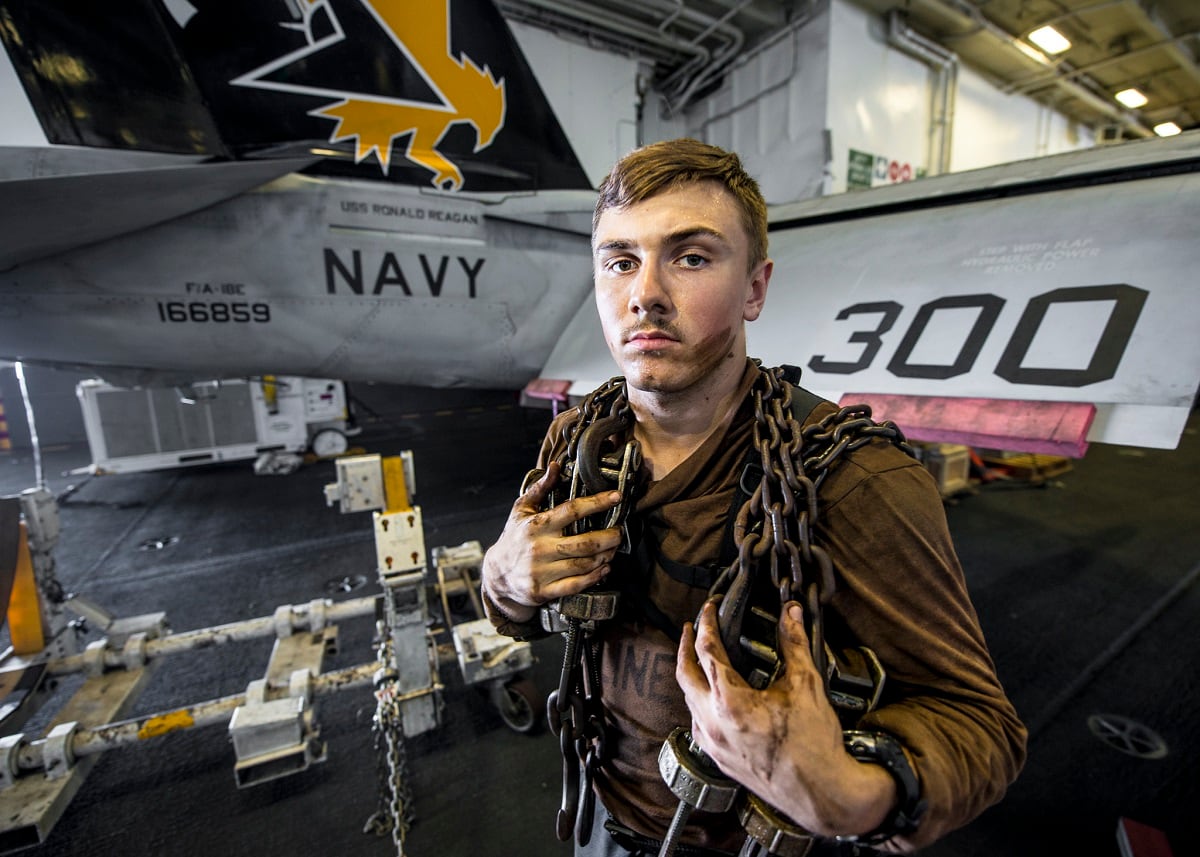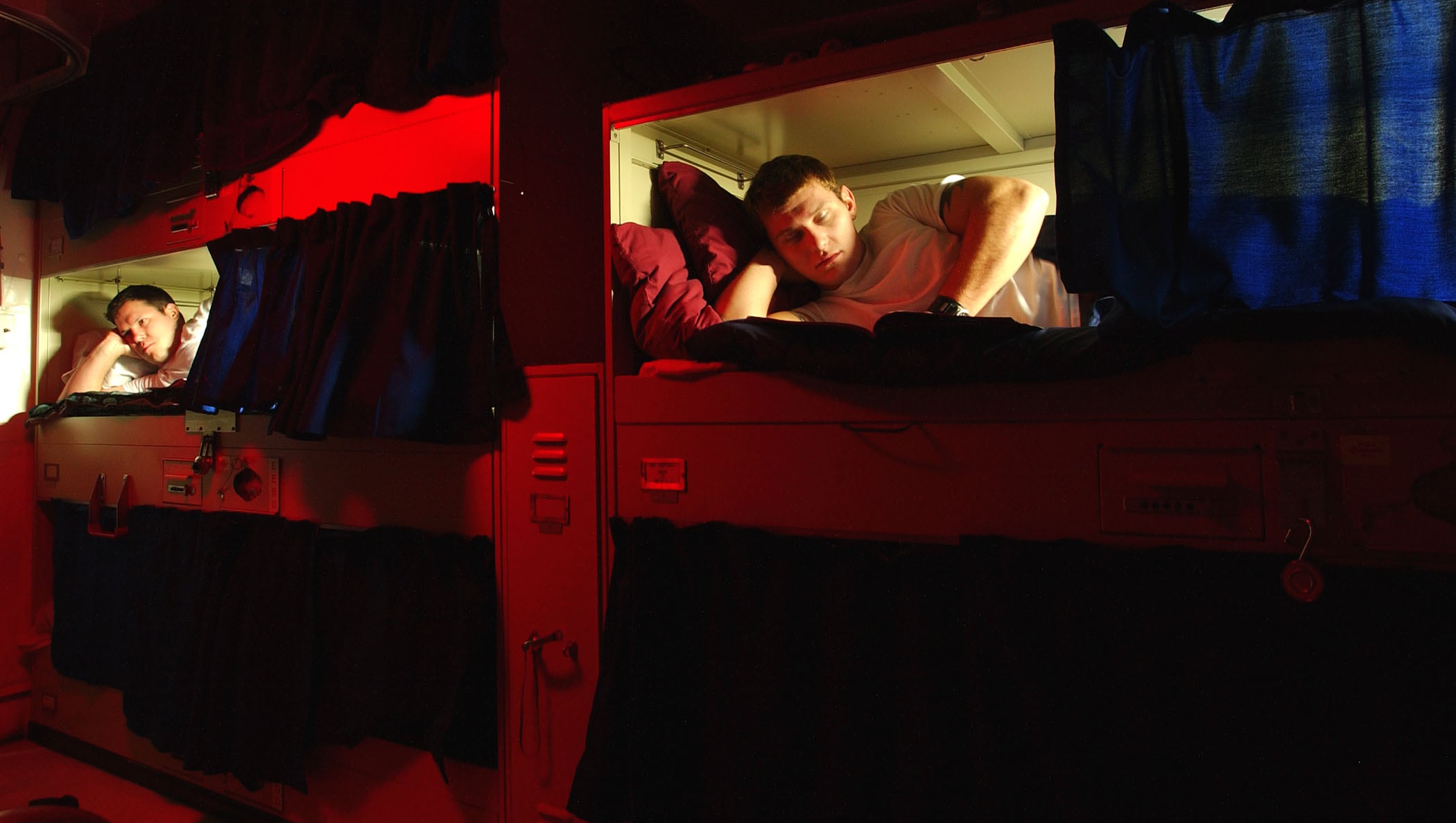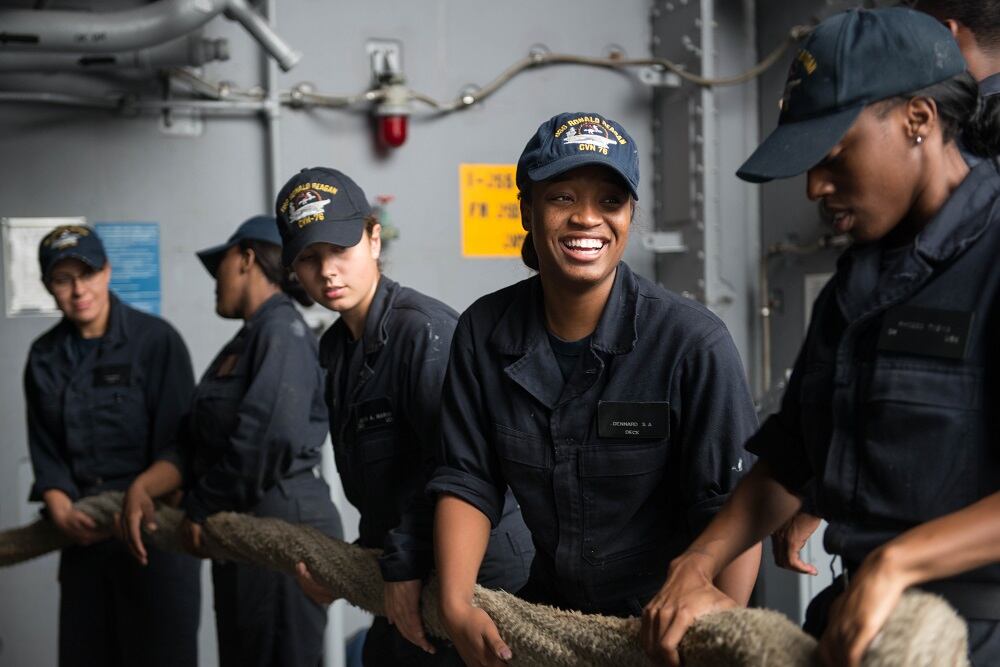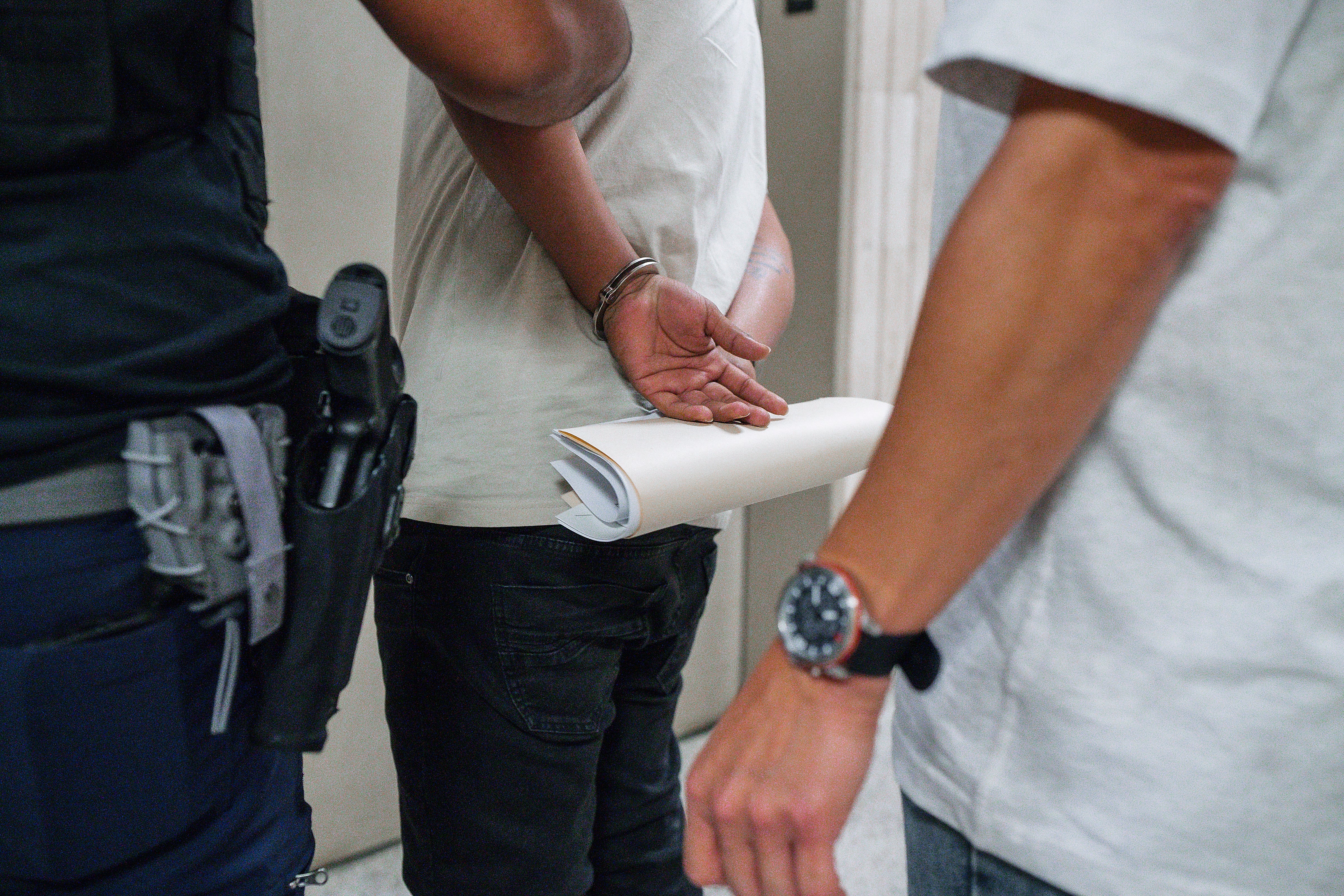The waterfront here is smaller than you might imagine. For its outsized impact on the world stage, the Navy’s 7th Fleet cruiser and destroyer flotilla numbers only 11 ships, meaning the total number of “CRUDES” sailors here is less than the population of most large high schools in the United States.
Sailors here regularly cross-deck while their ships are in deep maintenance to fill billets for ships going on patrol.
In Yokosuka, everyone seems to know someone on any of the other ships.
So, when first the Fitzgerald and then the McCain collisions claimed the lives of 17 sailors, it affected everyone on the waterfront in a personal way.
“It was tough,” said Cmdr. David Huljack, commanding officer of the destroyer Barry. “There is a connection here in Yokosuka. You can see it’s a small waterfront. There’s not 60 ships like there is in Norfolk. There is 10 of us and we all know each other. So there were members of our crew who knew sailors on Fitzgerald…and on McCain.
“From an emotional, crew standpoint, it was difficult. It was difficult to get on the 1MC and talk to the crew in August about the John S. McCain tragedy knowing what was going on back in Yokosuka, knowing what our shipmates were going through on McCain and we were stuck out in the ocean. It was tough. But the crew did well.”
Being underway at the time helped the crew focus on their mission, but they also found other ways to deal with the grief and emotion in the wake of the dual tragedies that struck last summer.
“We focused very hard on training, we focused very hard on rigor, and coming up with complex [damage control] scenarios,” Huljack said. “Not to suggest for a second that we weren’t before, but that became our outlet.
“We heard wonderful stories about the damage control effort on Fitzgerald and on John S. McCain. We could apply that energy to our own damage control and really create some challenging scenarios that were very helpful. That also, at the same time, provided an outlet for the crew that I think was productive.”
That instinct to respond to tragedy with rededication to the basics was demonstrated all over the fleet in the wake of the fatal accidents.
But beyond doubling down on fundamentals, life in 7th Fleet for sailors and their leaders has changed in small but important ways.
Sailors who spoke to Defense News said that in the wake of the accidents, watch and work schedules have shifted to allow more sleep for tired crew members.
Commanding officers, meanwhile, are being given more time in port for dedicated training time so that they are not juggling certifications with operational commitments.
What may seem like small things from the outside add up to a substantially different working environment on the waterfront.

CHANGES ON THE DECK PLATES
Sailors at all levels, but particularly in leadership positions, have begun to focus even harder on the basics, but also on managing sailors’ time in the demanding operational environment of 7th Fleet.
“From a chief perspective, we’re making sure we’re not overworking our sailors – making sure we are managing their time and ours properly,” said Chief Intelligence Specialist Christopher Smith.
“One thing that we’re doing on Chancellorsville — we’re on the deckplates with sailors so we have a good idea of what their capabilities and limitations are — is instead of sending everyone out for freshwater wash-down, we can have a few sleep and have a few support freshwater wash-down,” Smith said. “So, we’re more conscious of that; that we are managing our sailors’ time more effectively. At least I hope I am…”
The Navy has attempted to tackle the problem of weary sailors head-on. In September, then-Surface Warfare Boss Vice Adm. Thomas Rowden ordered all his commanding officers to implement watch bills that align with natural sleep cycles, or the so-called circadian rhythms.
RELATED

The watch schedule eliminates unnatural watch cycles such as “five-and-dimes” or five-hours-on, ten-hours-off, and the even more intense six-on, six-off, a cycle that regularly gets interrupted by daily shipboard life during the six hours of off time.
Instead, leaders are shifting to a schedule that attempts to ensure sailors get roughly the same amount of sleep at the same times every day — and more of it.
The shifting schedule has so far been popular on the waterfront.
“You get a sense of a schedule,” said Sonar Technician Surface 1st Class Aaron Lyons, assigned to the destroyer Benfold. “On this vessel it’s been very popular.”
The new watch bill forced ships to get more sailors qualified in more areas to fill critical watch stations and has forced ships to focus on manning to comply with the directive.
But it’s made a huge difference, according to Quarter Master Third Class Jose Rivera, assigned to the cruiser Chancellorsville.
“At the end of the day, the mission comes first and we have to do what we have to do,” Rivera said. “But, yes, they are taking steps to make sure that we are getting a decent amount of rest so that we’re, you know, awake, and not, as they call it, legally drunk.
“Especially me, we’re a small division and we were at port-and-starboard [watch sections], but now that everyone is getting [qualifications] we are at three or even four sections. We’re still getting used to it, but yeah, it’s good. I get more sleep now.”
DEDICATED TRAINING
Among ship leadership on the waterfront, 7th Fleet’s move towards more dedicated training time has been popular.
The in-port training time has made attaining certifications — a key focus of the aftermath of 2017 — easier to fit into the ship’s lifecycle.
After the accidents, Pacific Fleet did away with mitigation strategies that were allowing ships to operate without proper certifications, so long as they had a plan to get certified in the future. The system was a driving factor behind decline in 7th Fleet readiness on the waterfront.
Today, 7th Fleet is implementing a new force generation model that is supposed to lock in both maintenance and dedicated training time.
The net result has been an overall reduction in the operational availability of 7th Fleet ships, temporarily at least, as the ships dig out of the readiness hole created by the insatiable demands of U.S. Pacific Command and the Joint Staff.
But the time isn’t being wasted.
Antietam, back on the water after spending most of 2017 in dry dock because of a grounding, is the ship furthest along in the new force generation model, overseen by Afloat Training Group and the newly minted Commander Naval Surface Group Western Pacific, which serves as Naval Surface Force Pacific’s representative command in Japan.
For Lt. Cmdr. Jeremy Watkins, the ship’s executive officer, the new force generation model has been intense but effective.
“It means that we are training in all our mission areas all the time, effectively and with a lot of support from the waterfront,” Watkins said. “ATG, COMNAVSURFGRU WESTPAC — we’ve got experts on here today, as we speak.
“We’ve got search and rescue running now, we’ve got anti-terrorism force protection drills running right now, we’ve got our [maintenance and material management] certification in two weeks. We’re just busy. We’re busy training, but its dedicated training time so it’s been great.”
Cmdr. Leroy Mitchell, commanding officer of the destroyer Benfold, also marked the increased time in port to knock out certifications.
“For us, every day we are underway we try to knock out some kind of training, whether that’s engineering or combat systems, or we try to combine training scenarios,” Mitchell said.
“I’d say we’ve been fortunate the past two or three months to be in port and really concentrate on training. We’ve been through several certification events and we’re going through one right now: [surface warfare, electronic warfare and air warfare] going on this week.”
The changes being marked by sailors and officers on the Yokosuka waterfront are not by accident. It’s a dedicated effort by Navy leadership to stabilize and rehabilitate the 7th Fleet to get back out and be the most effective force possible.

“I say often that, as we know, both collisions were preventable,” said Vice Adm. Phillip Sawyer, head of 7th Fleet, in an interview with Defense News. “It was tragic. Those seventeen deaths weigh on us all. So, our work is to make sure that we’ve identified the proper things, to correct issues and the corrective actions we’ve put in place are to prevent those going into the future.
“I think we are well down that path. It requires constant attention.”
A NEW PATH FORWARD
Seven months have passed since that early August morning saw 10 of the destroyer John S. McCain’s sailors killed in a preventable collision, a loss made all the more shocking by its chronological proximity — just six short weeks — to the collision of the Fitzgerald and a container ship that claimed seven lives.
Much work and many months lie ahead before McCain will go back to the water and on patrol in the Pacific, as the gaping wound in her port side is healed.
And Seventh Fleet is healing as well.
After enduring tragedy and upheaval at the upper echelons of command, change has started to take root in Yokosuka under new leaders. Sailors, senior leaders, commanding and executive officers, as well as the Fleet’s top officer, reveal a different 7th Fleet than the one that sailed into the disastrous summer of 2017.
In the wake of the accidents, the Navy’s Pacific-based command structure saw a shake-up with little precedent in the history of the service. The Navy fired then 7th Fleet head Vice Adm. Joseph Aucoin, the first time a fleet commander had been fired since World War II.
Now, with a slew of new leaders and structures, 7th Fleet is moving on to new practices for readying ships and their crews, and is changing up how the ships operate at sea.
From the top of the fleet to the deck plates, the small and hard-hit community is effecting a course correction that all hope will avoid another senseless loss of life, create stability in the schedule for sailors assigned there, and make 7th Fleet once again the razor-sharp tip of the Navy’s spear.
Sawyer said manning of ships in 7th Fleet, an issue many believe was a key problem that contributed to the collisions, is improving.
“We’ve seen a constant and pretty steady uptick in manning across the board for our surface units. I think as we look at it now I would say it’s a very positive picture. There’s still room to improve but very positive at this point.”
Another major change reflected is 7th Fleet’s efforts to reign in its operational tempo.
“As you would expect, these actions have reduced the operational availability of our Japan-based ships in the short run as they undergo a rigorous recertification process,” Vice Adm. Woody Lewis told the readiness subcommittee of the House Armed Services Committee.
The recertification and retraining of the ships in Japan, as well as the reduced availability, will last for some months, Lewis continued.
“I expect that we will be passed this initial bow wave by late spring this year,” he said. “Full implementation of the new processes will take some time, but the end result will be a more ready, more capable, and more lethal Navy.”
The Navy’s new-found willingness and ability to say “no” to operational tasking is, without a doubt, tied to the accidents last summer, said Bryan Clark, a retired submarine officer and analyst with the Center for Strategic and Budgetary Assessments.
“It’s a great point to say that the Navy is saying ‘no’ now, and clearly what’s changed is these accidents,” Clark said.
“The Navy has wanted to do this for a while and it has been trying in various ways to reduce [operational tempo],” he said. “I think for the secretary of defense and the joint staff, it’s a lot clearer to them what’s at stake when you start to spread the Navy too thin.”
REPLENISHING THE RANKS
The Navy is eager to get more sailors to come to Japan — and stay longer.
Chief of Naval Personnel Vice Adm. Robert P. Burke earlier this year asked for an exception to Department of Defense policies that would allow for an increase of overseas-based sea duty tours for a maximum tour of up to four years.
Current rules only allow for a maximum of three years.
Sawyer said there are many reasons why sailors should seek out a tour in Japan. In many ways, Japan is a family-friendly place. Crime is minimal, many sailors like the culture and say the Japanese citizens are warm and friendly, he said.
Professionally, Navy personnel data suggests that forward-deployed sailors in Japan advance at a higher rate than the rest of the Navy.
This year, for example, the advantage was most dramatic for sailors moving into the E-4 paygrades, where FDNF sailors’ advancement rate was 56 percent, 13 points higher than the 43 percent Navy-wide rate, according to Navy personnel data.
“The reason people come out here I think is one, the operations,” Sawyer said. “You want to go see the world, come on out here. You get to live in another country and when you’re on one of these units you’re going to go to more port visits and see more things,” the admiral said.
“This is a place to be if you’re a sailor.”
David B. Larter was the naval warfare reporter for Defense News.





